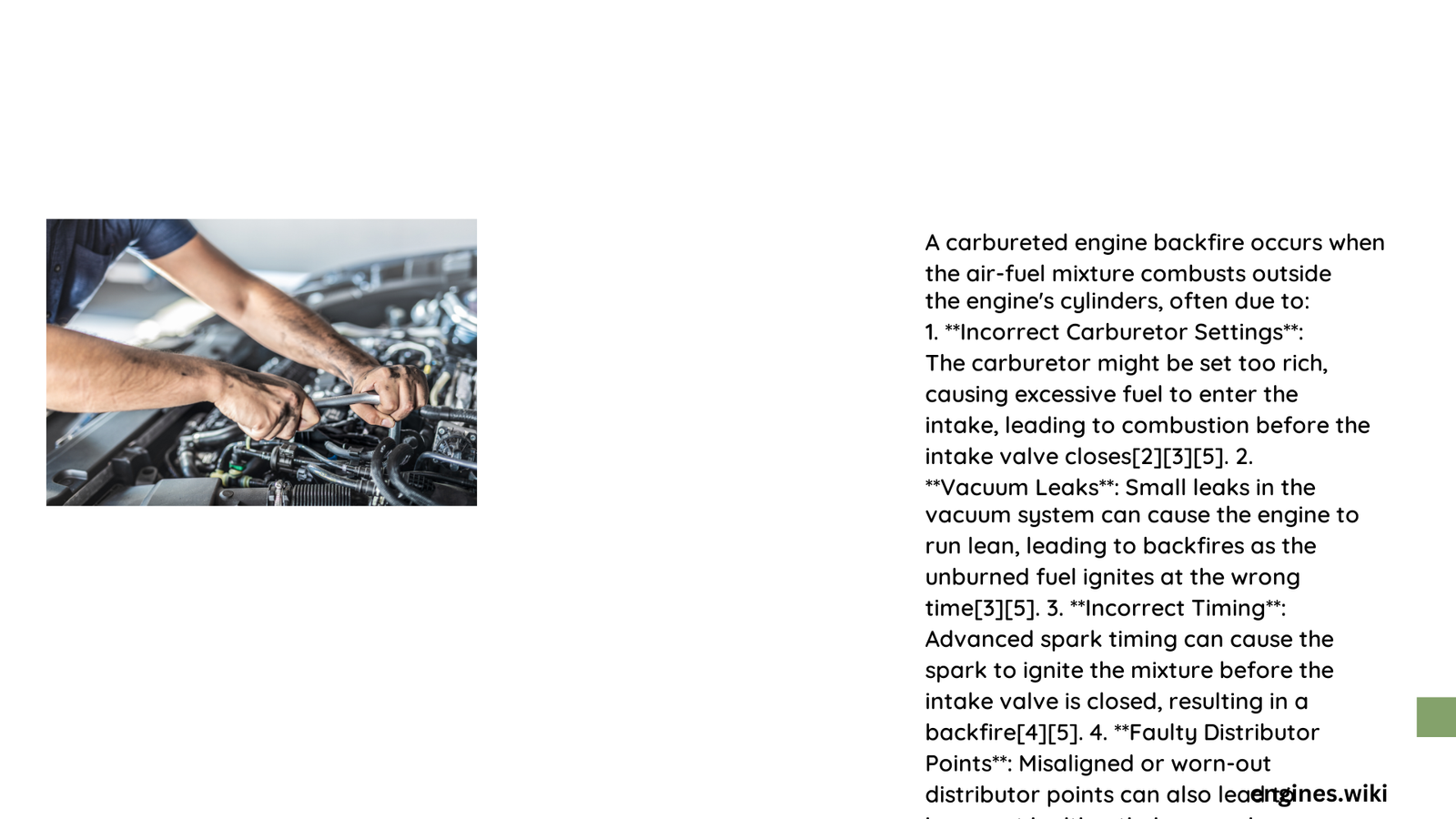Carbureted engine backfire is a complex mechanical phenomenon where unburned fuel ignites outside the engine’s combustion chamber, causing a loud popping sound and potential damage. This unexpected combustion can occur in the intake or exhaust system, signaling underlying issues with air-fuel mixture, ignition timing, or mechanical components. Understanding the intricate dynamics of backfiring is crucial for maintaining engine performance and preventing potential long-term damage.
What Causes Carbureted Engine Backfire?
Why Do Air-Fuel Mixture Ratios Matter?
The delicate balance of air and fuel is critical in preventing backfires. An ideal air-fuel ratio for gasoline engines is approximately 14.7:1 by weight. Deviations from this ratio can trigger backfire events:
| Mixture Type | Characteristics | Backfire Potential |
|---|---|---|
| Rich Mixture | Excess Fuel | High – Unburned fuel ignites in exhaust |
| Lean Mixture | Insufficient Fuel | High – Slow combustion creates unburned fuel |
How Do Ignition Timing Discrepancies Trigger Backfires?
Incorrect spark timing can cause premature or delayed fuel ignition:
- Spark firing before top dead center
- Incorrect spark plug wire sequence
- Worn distributor components
What Role Do Vacuum Leaks Play?
Vacuum leaks disrupt the precise air-fuel balance:
- Create lean running conditions
- Introduce unmetered air into the system
- Cause unpredictable combustion patterns
Can Mechanical Issues Contribute to Backfires?
Several mechanical factors can induce backfiring:
- Faulty EGR valve
- Damaged spark plug wires
- Worn ignition coils
- Carburetor malfunctions
How to Diagnose Carbureted Engine Backfire?

What Are the Symptoms?
Recognizable indicators include:
- Sharp popping sounds
- Visible exhaust flames
- Intermittent engine performance
- RPM fluctuations
What Diagnostic Tools Are Needed?
Essential diagnostic equipment:
- Multimeter
- Vacuum gauge
- Spark tester
- Carburetor synchronization tools
What Are Effective Repair Strategies?
How to Systematically Troubleshoot?
Recommended diagnostic approach:
- Inspect Ignition System
- Check spark plug wire order
- Test ignition coil resistance
-
Examine spark plug condition
-
Evaluate Carburetor
- Clean and adjust mixture screws
- Check accelerator pump function
-
Inspect choke mechanism
-
Examine Vacuum System
- Use leak detection fluid
- Replace deteriorated hoses
- Verify all connections
What Are Estimated Repair Costs?
| Component | Replacement Cost | Labor Time |
|---|---|---|
| Spark Plugs | $10-$30 each | 1-2 hours |
| Ignition Coil | $50-$100 | 1-2 hours |
| Carburetor Kit | $100-$300 | 4-6 hours |
What Environmental Factors Influence Backfiring?
How Do Temperature and Humidity Affect Performance?
- Cold temperatures increase rich mixture tendencies
- High humidity can marginally impact air-fuel ratios
- Extreme conditions stress carburetor calibration
Conclusion
Addressing carbureted engine backfire requires systematic diagnosis, understanding mechanical interactions, and precise adjustments. Regular maintenance and attentive troubleshooting can prevent most backfire-related issues.
